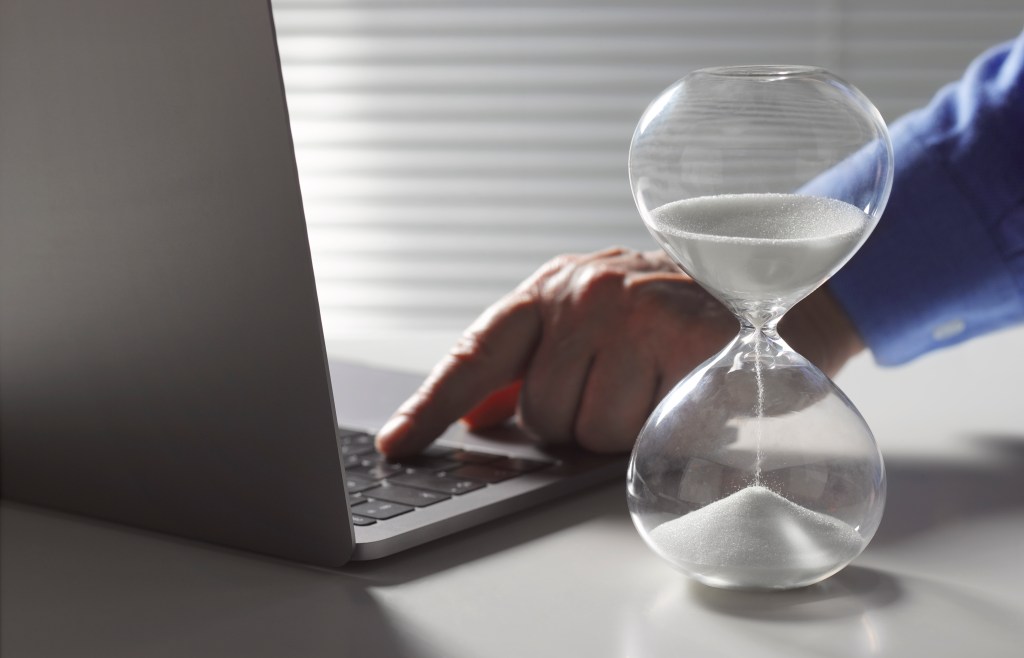How long would you puzzle over a problem, and would setting a time limit make a difference to your productivity?

Many productivity experts believe that our ability to focus is like a muscle that needs training. The more deep, focused work we do, the stronger our muscles will become and the easier we will find it to engage in deep work. But Scott Young, critically acclaimed author of Ultralearning, sees things differently. He believes that our ability to focus is about managing one’s emotions.
Making progress on big, important projects is often frustrating, and involves getting negative feedback and, at times, questioning your abilities (which, for me, brings back memories I had tried to repress of writing an 80,000-word PhD thesis). These challenges can create an instinctual aversion to getting started and maintaining focus.
Young has tried several strategies to improve his capacity to stay focused. One such method is called the Struggle Timer. The idea for the Struggle Timer emerged when he was contemplating his approach to studying and learning new material. One of his many accomplishments is that he learned the entire MIT computer science curriculum – normally taking four years – in less than twelve months. And he did this without taking any classes.
THE LIST
When working on solving a problem during the course, he often wondered: How quickly should he look at the answer when he couldn’t identify the right one? ‘The approach I took during the MIT challenge is that you should get the right answer immediately. So as soon as you get stuck, you should look at the right answer because immediate feedback is important.’
Over the years, Young shifted his view and now believes it often makes sense to struggle a little bit on harder problems for two reasons. Firstly, you can sometimes solve the problem
with a bit more time; therefore, struggling for a little bit longer can be beneficial because you might need that time to get to the right answer. And working on getting to the right answer yourself is much more valuable than just looking it up.
Secondly, Young believes there’s a benefit to struggling for a little longer because it allows you to appreciate the correct answer better. ‘Because of that negative emotional state, the feeling of frustration when you do encounter the answer will be much more memorable because it will have solved a problem that you were like, “Ah, that’s how you solve it!” as opposed to, “Oh yeah, I guess that makes sense.”’
Young took these insights, and now, when he feels himself struggling with a problem or a task, he sets the Struggle Timer for five or 10 minutes. And often, these additional five or 10 minutes can make the difference between solving a problem or getting back into flow – and giving up or procrastinating on another task.
Put it into action:
- When you feel like you have hit a stuck point on a task, set a timer for five to ten minutes. Often, that is all it takes to push through the negative emotions you are feeling and get over the obstacle you are experiencing. (You might even wish to purchase a five- or ten-minute hourglass timer and label it Struggle Timer, as labelling emotions can lessen their intensity.)
- If you are still struggling after ten minutes, give yourself permission to take a break. But chances are, you’ll be back in the flow and the negative emotions will have passed. And if you use the Struggle Timer in the context of solving a problem, the extra few minutes may well have been enough time to get to the answer.
Dr Amantha Imber is the author of Time Wise (of which this article is an edited extract) the founder of behavioural science consultancy Inventium and the host of How I Work, a podcast about the habits and rituals of the world’s most successful people.
Look back on the week that was with hand-picked articles from Australia and around the world. Sign up to the Forbes Australia newsletter here.



